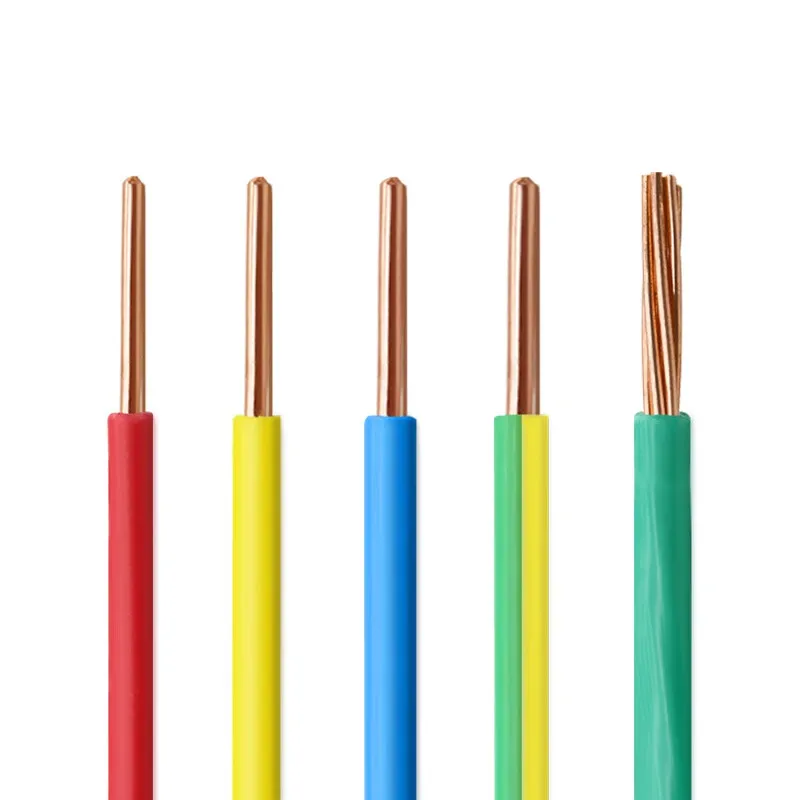Time: 2025-04-24 13:58:48 Source: Henan Province Jianyun Cable Co., Ltd.

A 2.5 mm electrical cable refers to the cross-sectional area of its conductor, typically made of copper or aluminum, measuring 2.5 square millimeters. This size is roughly equivalent to 14 AWG in the American Wire Gauge system (as discussed in prior house wiring contexts), with a diameter of about 1.78 mm for a single solid conductor. It’s often a multi-core cable (e.g., 2.5 mm² twin and earth, similar to 14-2 NM-B) with two or three conductors (live, neutral, and sometimes earth) encased in insulation like PVC or XLPE.
The cable is rated for low voltage applications, typically up to 450/750V per IEC 60227 (as mentioned in prior IEC discussions), and can handle currents of around 20–25A for copper, depending on installation conditions (e.g., ambient temperature, bundling). This makes it suitable for moderate electrical loads in homes or small businesses. A 2.5 mm cable is like a “mid-sized delivery truck” in the electrical world—big enough to carry a decent load, but not for heavy-duty industrial jobs.
The 2.5 mm electrical cable is widely used in residential and light commercial settings for circuits requiring moderate power. Below is a table summarizing its common applications:
| Application | Current Rating (Copper) | Example Load |
|---|---|---|
| Socket Outlets | 20A–25A | General outlets for appliances (e.g., TV, fridge) |
| Lighting Circuits | Up to 20A | Multiple ceiling lights or fans |
| Small Appliances | 20A | Kitchen appliances (e.g., microwave, kettle) |
| Ring Circuits | 20A–25A | UK-style ring mains for multiple outlets |
Socket Outlets: In many countries (e.g., UK, Saudi Arabia, as discussed earlier), 2.5 mm² cable is standard for general-purpose socket outlets on a 20A circuit, powering devices like TVs, refrigerators, or computers (up to 2500W at 230V). It’s often used in radial circuits where each outlet is directly connected to the panel.
Lighting Circuits: While 1.5 mm² is common for lighting (as per French NF C 15-100 standards), 2.5 mm² is used for larger lighting circuits with multiple fixtures or longer runs to minimize voltage drop. For example, it can power 10–15 LED lights (100W total) on a 230V system.
Small Appliances: Dedicated circuits for small appliances like microwaves or kettles (1500W–2000W) often use 2.5 mm² cable to handle the load safely, ensuring the cable doesn’t overheat.
Ring Circuits: In the UK, 2.5 mm² cable is standard for ring main circuits, where the cable loops from the panel to multiple outlets and back, typically on a 32A breaker (derated to 20A due to load diversity). This setup maximizes flexibility for household power needs.
Using a 2.5 mm cable is like choosing a “versatile tool” for electrical jobs—it’s strong enough for most household tasks but not overkill like larger cables for heavy machinery.
While 2.5 mm electrical cable is versatile, several factors ensure its safe and effective use in electrical installations:
Choosing a 2.5 mm cable is like packing for a trip—you need to know your “destination” (load and environment) and follow the “rules” (local codes) to ensure a safe journey.
A 2.5 mm electrical cable, with a 2.5 square millimeter conductor, is widely used in residential and light commercial settings for low voltage applications (up to 450/750V). It’s ideal for socket outlets (20A–25A), lighting circuits, small appliances (e.g., microwaves), and ring circuits (e.g., UK systems), handling loads up to 4600W–5750W at 230V. Key considerations include current capacity, voltage drop, environmental factors, fire safety (e.g., IEC 60332), and compliance with local standards (e.g., SASO, BS 7671). This cable size offers a practical balance of capacity and safety for everyday electrical needs in homes and small businesses.